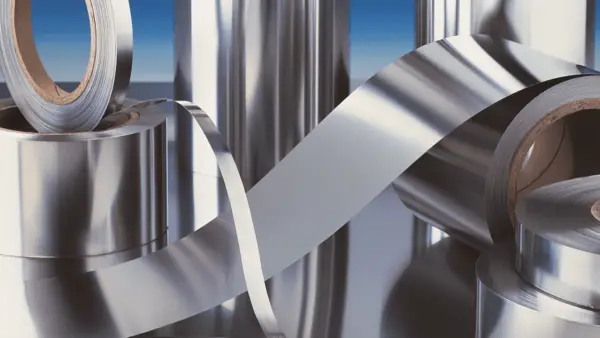Stainless steel is valued worldwide for its main property, corrosion resistance. A property that results when the chromium content is at least 10.5 percent by weight. This chromium content causes a protective and dense passive layer of chromium oxide to form on the surface of the stainless steel piece.
This passive layer of chromium oxide is resistant and surface-stable and at the same time extremely thin.
CORROSION
Corrosion refers to the reaction of a material with its environment, resulting in a change in the basic material; It is a spontaneous mechanism, whereby nature reverses the processes of material extraction of many man-made goods.
Because of its ability to withstand the physical and chemical conditions to which it is exposed, stainless steel is a very durable material. While steel lasts 15 to 20 years, stainless steel retains its properties for up to 60 years.
Stainless steel has great advantages, but it still needs to be cared for and treated properly, it should not be neglected.
In the case of stainless steel, this means that it has a higher corrosion resistance compared to other metals or alloys. But when does stainless steel rust and why?
AGGRESSIVE CONDITIONS
Particularly aggressive conditions can cause stainless steel and steel to corrode. To ensure that a stainless steel structure or application remains intact and unharmed under potentially damaging conditions, it’s best to use high-alloy stainless steel. Still, it’s one of the materials that stands up to certain conditions the most, and with proper maintenance, it will give you more durability than any other.
CORROSION RESISTANCE IS QUANTITATIVE
Essentially, stainless steel is quite suitable for most environments and is largely resistant to corrosion. In addition, there are different grades of stainless steel, each with different levels of corrosion resistance.
CORROSION MECHANISMS
Stainless steel can be susceptible to certain localized corrosion mechanisms, which can be divided into 6 categories:
-Pitting (pitting corrosion): this happens to stainless steel exposed to an environment where chloride is present.
-Cracking: A form of corrosion caused by oxygen concentrations immersed in a crack. This is usually not a problem for the operation of the workpiece unless the stainless steel is in a stagnant solution where chlorides could accumulate.
-Stress corrosion cracking: Tensile stresses associated with certain environmental conditions can cause stress corrosion.
-Bimetallic Corrosion: Galvanic (bimetallic) corrosion occurs when dissimilar metals come into contact with each other in a common electrolyte, such as when stainless steel oxidizes in rain.
-General corrosion: when stainless steel has a pH below 1, general corrosion occurs.
– Intergranular corrosion (grain decay): when an austenitic stainless steel is heated to about 450-800 °C, the steel forms existing carbon grain boundaries along which corrosion occurs.
HOW TO PREVENT STAINLESS STEEL FROM RUSTING?
When cleaning a stainless steel surface, avoid aggressive methods. Do not use cleaning agents containing chlorides such as fluoride, iodine and chlorine.
The use of steel wool on stainless steel, causes the surface to enlarge and the particles left behind from the steel wool contain iron, causing further corrosion.
Never use alcohol based cleaners as they will remove the chromium oxide layer.
With the right treatment your stainless steel will last longer, now you know how to best maintain it.
